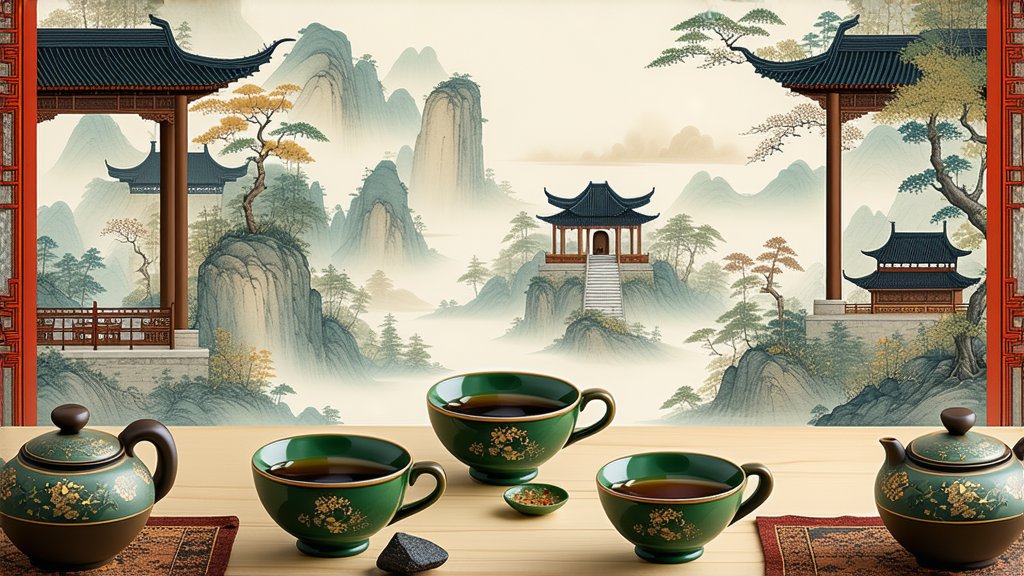
In the vast and diverse landscape of Chinese tea culture, few varieties stand as tall or carry as rich a history as Keemun Black Tea. Originating from the picturesque mountains of Anhui Province, this exquisite tea has journeyed through centuries, weaving itself into the very fabric of Chinese heritage. Its name, derived from the Qimen County in Anhui, echoes its ancient roots, while its unique flavor profile and meticulous production processes have earned it a revered place among connoisseurs worldwide.
A Glimpse into History
The story of Keemun Black Tea begins in the Tang Dynasty (618-907 AD), a period marked by flourishing arts, culture, and trade in China. It is said that during this golden age, the tea from Qimen gained favor among the imperial court, setting the stage for its future prominence. By the Ming Dynasty (1368-1644 AD), Keemun had become a significant player in international tea trade, particularly along the ancient Silk Road. As merchants bartered and exchanged goods across continents, Keemun's reputation spread far beyond China's borders, reaching Europe where it was often referred to as "Black Tea" due to its dark color when brewed.
Varieties and Characteristics
Keemun Black Tea is not a monolith; rather, it encompasses a range of sub-varieties, each with distinct characteristics yet sharing a common lineage. The most renowned among them are:
-
Keemun Hao Ya (Grade 1): Known for its delicate appearance and refined taste, this top-grade Keemun features tightly rolled leaves with a downy tip, resembling orchids. Its aroma is sweet and fruity, with hints of chestnut and apricot, making it a favorite among discerning tea drinkers.
-
Keemun Gong Fu (Grade 2): Slightly more robust than Hao Ya, Gong Fu offers a balance between strength and subtlety. Its leaves are slightly larger and less uniform, resulting in a fuller body with notes of smokiness and maltiness, alongside a lingering sweet aftertaste.
-
Keemun Mao Feng (Grade 3): This variety strikes a harmonious chord between affordability and quality. With a stronger, more earthy flavor profile, it appeals to those who prefer a heartier cup without sacrificing the essence of Keemun's charm.
The Craft of Production
The artistry behind Keemun Black Tea lies in its meticulous production process, which involves several key steps:
-
Withering: Freshly harvested leaves are spread out in bamboo trays under the sun or in shaded areas to reduce moisture content by approximately 50-60%. This step initiates enzymatic reactions that contribute to the tea's flavor development.
-
Rolling: The withered leaves are then rolled using traditional techniques or modern machinery to break down cell walls, allowing essential oils to mix with the juices, enhancing aroma and taste.
-
Oxidation: Rolled leaves are left to oxidize, a process crucial for developing the characteristic black color and complex flavors. The duration varies based on desired flavor profiles but typically lasts several hours.
-
Fixation: To halt oxidation and preserve flavors, the leaves undergo high-temperature treatment, usually by steaming or roasting.
-
Drying: Finally, the fixed leaves are dried to reduce moisture content further, ensuring stability for storage and transport.
The Art of Tasting
To truly appreciate Keemun Black Tea, one must engage in the traditional Chinese tea ceremony, an experience that goes beyond mere consumption—it's a meditative practice steeped in history and mindfulness. Here’s how you can savor this elixir:
-
Preparation: Use a Yixing clay teapot or a clear glass pot to observe the unfurling leaves. Rinse the pot with hot water before adding 3-5 grams of loose leaf tea per 200ml of water.
-
Water Temperature: Boil water to around 90-95°C (194-203°F). Avoid boiling directly as it may scald the delicate leaves.
-
Steeping: Pour hot water over the leaves, allowing them to infuse for about 3 minutes for the first brew. Adjust steeping time for subsequent infusions based on personal preference.
-
Observation: Watch the leaves dance as they unfurl, releasing their fragrance. Note the color of the liquor, which should be a rich amber hue.
-
Smelling: Inhale deeply before tasting to detect the nuanced aromas—sweet, floral, or woody—that define Keemun's character.
-
Tasting: Sip slowly, letting the tea coat your palate. Pay attention to the balance between astringency and sweetness, the depth of flavor, and the lingering finish.
-
Multiple Infusions: Keemun Black Tea is known for its ability to yield multiple infusions, each revealing different facets of its complexity. Continue steeping with fresh hot water, gradually increasing steeping times.
Conclusion
Keemun Black Tea is more than just a beverage; it embodies a legacy of craftsmanship, cultural exchange, and a deep connection to nature. From its storied past along the Silk Road to its present status as a symbol of Chinese tea excellence, Keemun continues to captivate tea enthusiasts globally. By understanding its history, exploring its varieties, appreciating its intricate production methods, and engaging in the ritual of tasting, one embarks on a journey that transcends time and geography, celebrating the art and heritage of this remarkable tea.